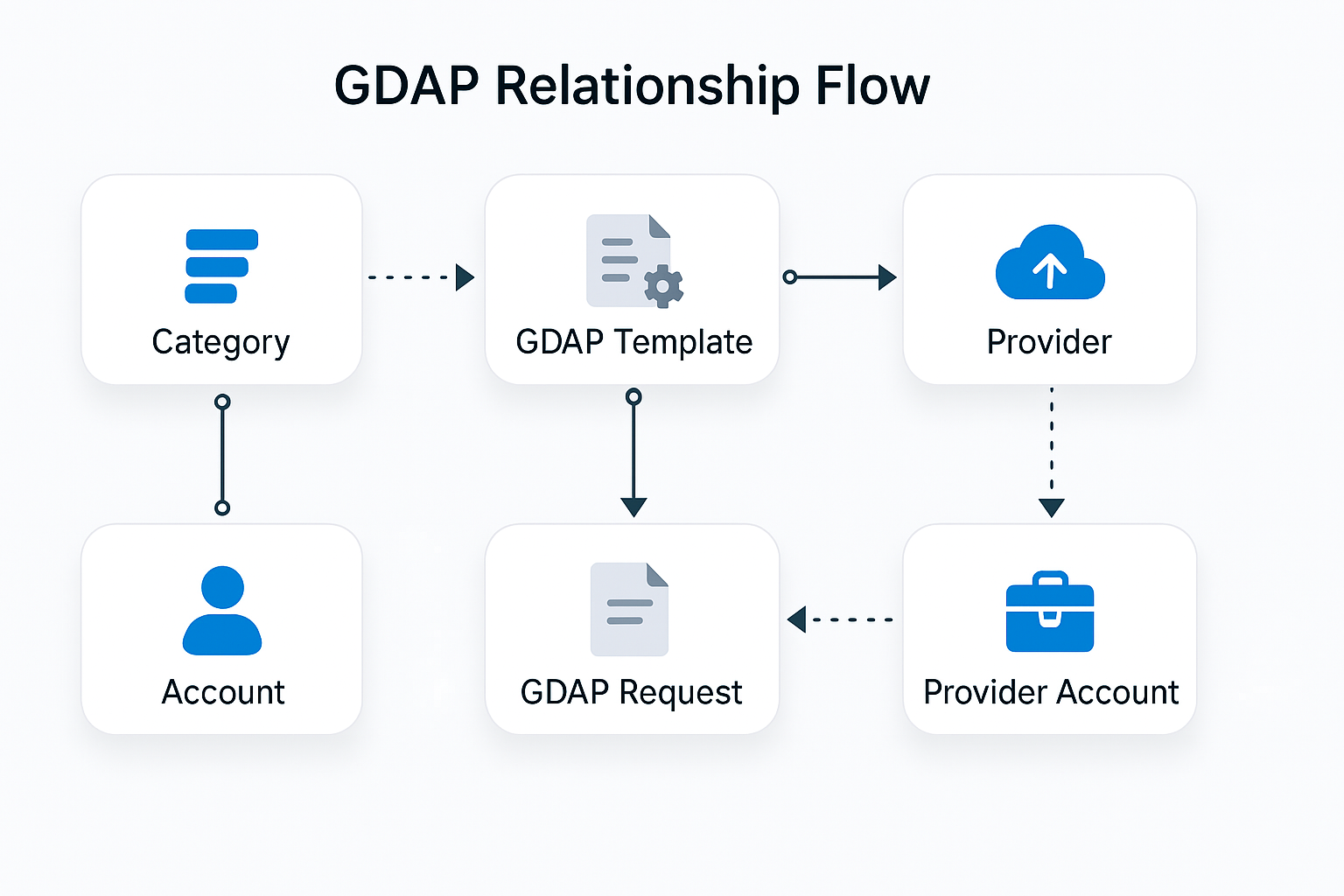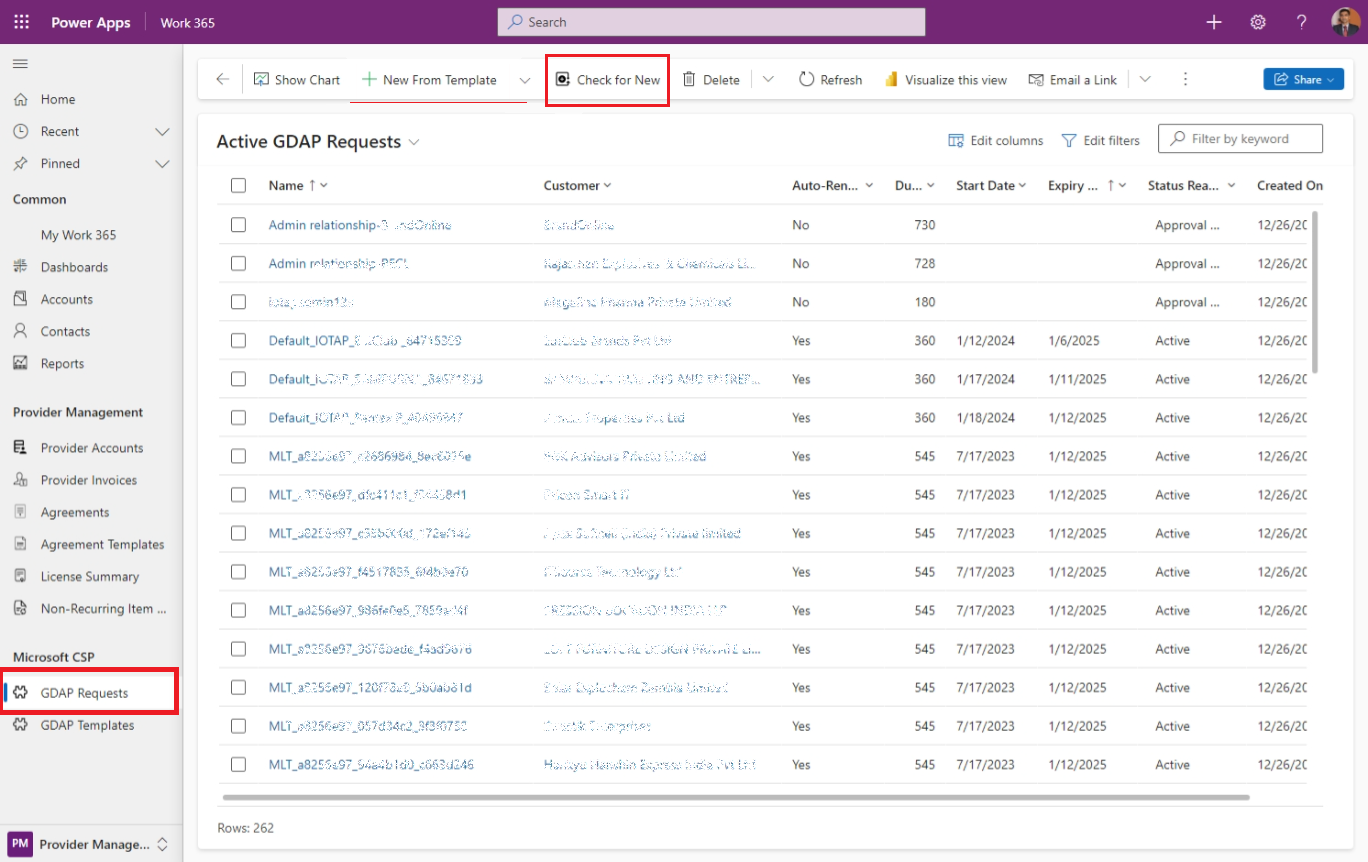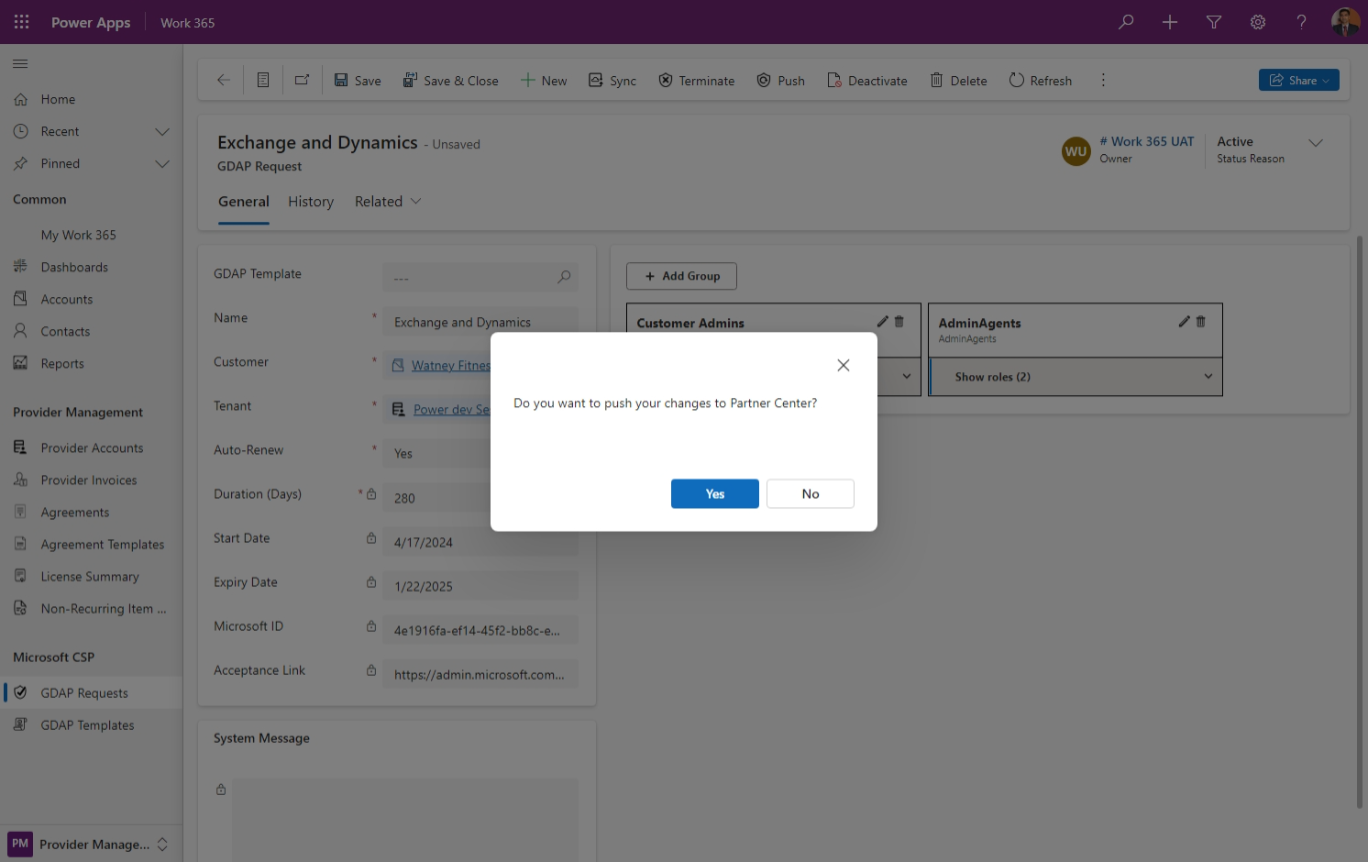Making GDAP Work for You: Control, Compliance and Customer Trust

Every CSP relies on delegated access to keep customer environments running smoothly. But that access also comes with responsibility, and risk. Granular Delegated Admin Privileges (GDAP) is Microsoft’s way of putting structure around that access: tighter control, shorter lifecycles, and clearer accountability.
For partners, GDAP means rethinking how permissions are granted, tracked, and renewed, without slowing down service. Work 365 makes that possible by bringing automation, alerts, and visibility directly into your operational workflows.
Why Microsoft Introduced GDAP
Under the old Delegated Admin Privileges (DAP) model, partners could gain tenant-wide admin access through Partner Center. While convenient, it created broad exposure. Once connected, a partner had Global Admin rights across the customer environment, often without expiration or review.
Microsoft introduced GDAP to align with its Zero Trust framework and the principle of least privilege. The goal is simple:
-
Role-based: Each admin role (User Admin, Exchange Admin, Security Reader) is granted separately.
-
Time-bound: Each relationship has an expiry date (default two years or less).
-
Consent-driven: Customers approve and can terminate access at any time.
Since the 2024 transition program, Microsoft has phased out most DAP relationships and made GDAP mandatory for new CSP customers. For partners, this isn’t optional compliance, it’s now part of standard operations.
What Changes for CSPs and MSPs
GDAP is good security practice, but it adds admin overhead. Operations teams must now track which relationships exist, when they expire, and who approves them. Without a system, those tasks quickly turn into spreadsheets and missed renewals.
Common pain points we hear from partners:
-
Renewal risk: If a GDAP expires and isn’t renewed in time, automations and support flows break.
-
Visibility gaps: Different teams (ops, finance, support) can’t see which customers are covered.
-
Over-permissioning: Global Admin roles creep back in “just to be safe.”
That’s why Work 365 integrates GDAP management directly into your CSP workflow. Instead of treating it as a security project, you treat it as part of your billing, renewal, and support process.
How Work 365 Simplifies GDAP - Without Adding More Tools

When Microsoft announced GDAP, many partners worried they’d need a separate security portal just to track access. Work 365 takes the opposite approach: build GDAP control into the platform you already use to manage subscriptions and customers.
Here’s how we make it easier to operate securely at scale:
1️⃣ Central visibility by customer
Work 365 maps each customer’s GDAP relationship, showing role scope, start date, expiry, and approval status. Operations teams don’t need to switch between Partner Center tabs or manually check tenants.
This single view lets you spot expired or missing relationships early, avoiding surprise access issues.
2️⃣ Built-in renewal and expiry tracking
Microsoft designed GDAP relationships to expire by default. Work 365 turns that into a manageable process: automated alerts when access is nearing expiry, and renewal actions embedded in the same workflow where you already handle customer subscriptions.
No separate security calendar, just an operational reminder that keeps services running.
3️⃣ Least-privilege templates that enforce policy
Defining roles manually for every tenant is error prone. Work 365 uses templates based on Microsoft’s least-privilege role guidance, so every new GDAP request follows the same secure standard. Global Admin is restricted to shorter durations and can’t auto-renew; ensuring compliance by design, not by habit.
4️⃣ Automated customer approvals
GDAP requires the customer to approve each relationship. Instead of sending links manually, partners can trigger notifications and reminders from within Work 365. The process stays transparent, traceable, and fast; no back-and-forth emails to chase signoffs.
5️⃣ Sync with Partner Center in real time


When Microsoft updates a relationship: approval, expiry, termination; Work 365 reflects it immediately. Your ops team is always working from the truth source. No more guessing which status is current.
Turning GDAP from a Security Requirement into Operational Confidence
GDAP was built for security, but it also creates operational discipline. With structured access, you can answer questions customers and auditors now ask routinely:
-
Who has access to my tenant today?
-
When does that access expire?
-
Which roles are active?
Work 365 gives you clear, auditable answers instantly. That not only protects customers but also strengthens your reputation as a responsible CSP. Instead of viewing GDAP as an extra step, partners using Work 365 use it to tighten renewal cycles, reduce manual tickets, and prove security compliance without extra administration.
Practical Guidance for Partners in 2025
Even as GDAP matures, the basics remain the same: least privilege, time-bound access, and auditable consent. Here’s a quick operational checklist:
-
Audit your access map. List all active GDAP relationships and their expiry dates.
-
Align templates with Microsoft’s supported workloads. Each role should match a specific operational need, no Global Admins “just in case.”
-
Enable renewal alerts. Set up automated notifications for relationships expiring within 60 days.
-
Educate customer-facing teams. They should know how GDAP approvals work and what to do if a customer revokes access.
-
Integrate GDAP review into your monthly operational cadence. Treat it like a billing reconciliation, routine and data driven.
Conclusion
Granular Delegated Admin Privilege (GDAP) has reshaped how Microsoft partners work with customer tenants. It sets a higher bar for security and accountability, but it doesn’t have to slow you down.
With Work 365, GDAP becomes part of your standard CSP rhythm: visible, tracked, and renewed on time. You keep access secure, customers confident, and operations running without exceptions or fire drills.
Review your GDAP setup with Work 365, book a 20-minute walkthrough.
What is GDAP?
GDAP stands for Granular Delegated Admin Privileges. It’s Microsoft’s secure access model that replaces traditional DAP (Delegated Admin Privileges). GDAP limits partner access to specific roles, workloads, and time periods—aligning with Zero Trust and least-privilege principles. It gives both partners and customers tighter control over who has access to what.
How does GDAP affect my CSP operations?
GDAP changes how you grant and maintain access to customer tenants. Each relationship is role-based, time-bound, and consent-driven. That means operations teams must track expirations, renewals, and approvals to prevent service disruption. Partners using Work 365 can automate these tasks, avoiding manual renewals and missed expiries.
Is GDAP mandatory for all Microsoft partners?
Yes. Since Microsoft’s 2024 transition program, GDAP has replaced DAP as the standard for new and existing customer relationships in Partner Center. DAP connections are gradually being removed as GDAP equivalents are created.
What happens if a GDAP relationship expires?
When a GDAP relationship reaches its expiry date, partner access to the customer tenant is removed automatically. Support tickets, automation, and billing workflows relying on that access may fail until the relationship is renewed. Work 365 helps partners avoid this by sending early-warning alerts and embedding GDAP renewals in daily operations.
Can I auto-extend GDAP relationships?
Microsoft supports auto-extend for most GDAP roles. Each extension renews for six months unless disabled. However, Global Administrator roles cannot auto-extend and must be renewed manually every 180 days. Work 365 enforces these Microsoft rules automatically to keep partners compliant.
How do customers approve or terminate GDAP access?
Customers receive an approval link from Partner Center and can also view or end GDAP relationships directly in the Microsoft 365 Admin Center. Partners using Work 365 can automate customer notifications and reminders, keeping approval cycles short and transparent.
What are best practices for managing GDAP at scale?
-
Assign roles strictly by business need.
-
Review relationships monthly and renew before expiry.
-
Document which team members hold which roles.
-
Enable auto-extend only for low-risk admin roles.
-
Use a single system of record, like Work 365, to track all relationships.
Where can I learn more or see GDAP in action?
Book a 20-minute walkthrough to review your GDAP setup and see how Work 365 helps automate and secure access management.
